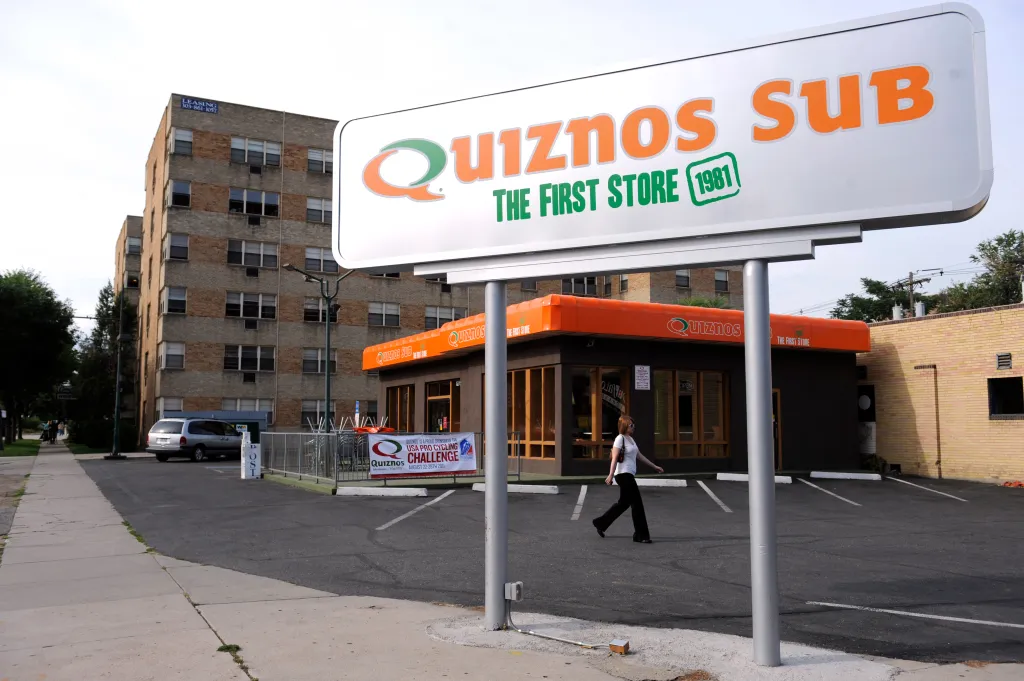Hi, Dave Fox here from Starsacape SEO. In the early 2000s, Quiznos was riding high as a successful competitor to Subway, offering something different: toasted sandwiches packed with flavor, setting it apart from the cold sub market.
At its peak in 2007, Quiznos had over 5,000 locations worldwide, and it was the second-largest sandwich chain in North America.
However, by 2014, the once-mighty empire filed for bankruptcy. What went wrong?
This is the story of how Quiznos, once a fan favorite for its innovative subs, sank under the weight of poor business practices, legal battles, and a rapidly changing market.

Call or Text Starscape SEO: (519) 208-8680

A Promising Start: Toasted Subs and Unique Flavors
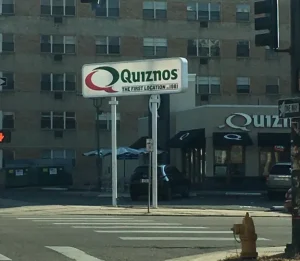
Founded in 1981 in Denver, Colorado, by chef Jimmy Lambatos, Quiznos initially gained attention with its unique focus on toasted submarine sandwiches.
Lambatos believed that toasting brought out the flavors in food, which resonated with customers.
By offering a menu that included fresh, toasted bread and premium ingredients, Quiznos distinguished itself from competitors like Subway.
The brand’s quirky marketing campaigns, including the infamous “Spongmonkeys” commercials, helped build a strong, somewhat cult-like customer base.
By 2007, Quiznos had grown into a fast-food powerhouse with locations not just across the U.S., but internationally, operating in over 40 countries. Its innovative approach, combined with smart advertising, catapulted the chain to success.
The Franchisee Problem: Squeezing the Operators
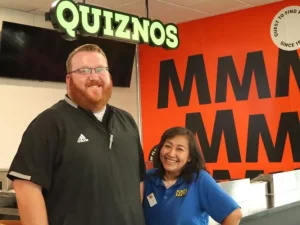
However, behind the scenes, Quiznos’ franchise model sowed the seeds of its downfall.
Unlike many fast-food chains, where the franchisee has some degree of autonomy, Quiznos tightly controlled many aspects of its franchises.
This included forcing franchisees to purchase ingredients and supplies from company-approved vendors at inflated prices.
As a result, while Quiznos’ corporate headquarters profited, franchise owners struggled to make money.
According to reports, Quiznos’ franchisees were being squeezed by excessive fees and rigid control over operations.
The company’s supply chain was a major sticking point—franchisees were required to buy everything through the corporation at markups that made profitability difficult, if not impossible.
One franchise owner recalled spending up to 38% of his revenue just on food costs, which is significantly higher than industry standards.
Legal action soon followed.
Franchisees banded together and filed class-action lawsuits against Quiznos, accusing the company of misrepresenting the profitability of their stores and manipulating the supply chain for its own benefit.
These lawsuits painted a damning picture of a company that, rather than supporting its franchise owners, seemed to exploit them.
Market Saturation and Poor Location Strategy

Another problem was the rapid expansion of Quiznos.
In the rush to compete with Subway, the company opened thousands of new locations within a short period.
This overexpansion led to market saturation, particularly in urban areas where Quiznos franchises were located dangerously close to one another.
The increased competition between franchises cannibalized their own sales, leaving many stores struggling.
Additionally, Quiznos’ aggressive strategy of selling franchise territories—often to inexperienced owners—led to a glut of locations that couldn’t sustain themselves.
Many franchisees found themselves paying high startup costs without seeing the promised foot traffic or revenue.
Some franchisees even alleged that Quiznos had sold them locations with little potential for success, and the brand became notorious for locations that would close as quickly as they opened.
Failed Marketing Campaigns and Controversial Ads
While Quiznos initially gained attention with its creative and often bizarre marketing campaigns, including the “Spongmonkeys” and the “Raised by Wolves” ads, these strategies started to falter.
Although memorable, these campaigns did little to broaden the chain’s customer base beyond its initial following.
Meanwhile, competitors like Subway stuck to simple, effective promotions like the “$5 Footlong,” which resonated with a wider audience.
Quiznos tried to respond with its “Prime Rib Cheesesteak Challenge,” a head-to-head comparison with Subway’s cheesesteak sandwich.
Unfortunately, the promotion fell flat, and Quiznos could not replicate Subway’s success in attracting bargain-conscious customers.
To make matters worse, Quiznos also faced criticism for its expensive menu items.
Customers were drawn in by the quality but were put off by the higher prices, especially during the Great Recession when consumers were looking for more affordable options.
Financial Troubles and Bankruptcy
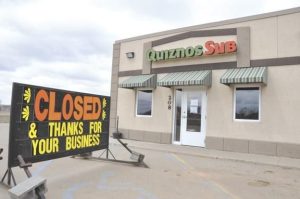
As lawsuits piled up and franchisees closed locations, Quiznos’ financial situation deteriorated.
By 2012, the company was saddled with nearly $900 million in debt. Avenue Capital Group, a hedge fund, purchased a majority stake in Quiznos in an attempt to restructure the company’s finances. Despite these efforts, the brand continued to lose ground.
In March 2014, Quiznos filed for Chapter 11 bankruptcy.
The company cited its debt load and the declining number of stores as major factors for the filing.
Under the bankruptcy plan, Quiznos reduced its debt by $400 million and emerged from bankruptcy a few months later.
However, the damage was done—thousands of stores had closed, and the once-iconic brand had been reduced to a fraction of its former self.
The Racketeering Allegations

Quiznos was also embroiled in a highly publicized lawsuit where franchisees accused the company of engaging in racketeering.
Franchisees alleged that the company had misled them into buying franchises with inflated revenue projections, all while manipulating the supply chain to their detriment.
The lawsuit was settled in 2010 for an estimated $100–200 million.
Although Quiznos denied any wrongdoing, the settlement forced the company to implement a new business plan designed to provide more support to franchise owners.
However, by this point, Quiznos had already lost the trust of many franchisees.
Post-Bankruptcy: A Small Rebirth, But Far From Glory
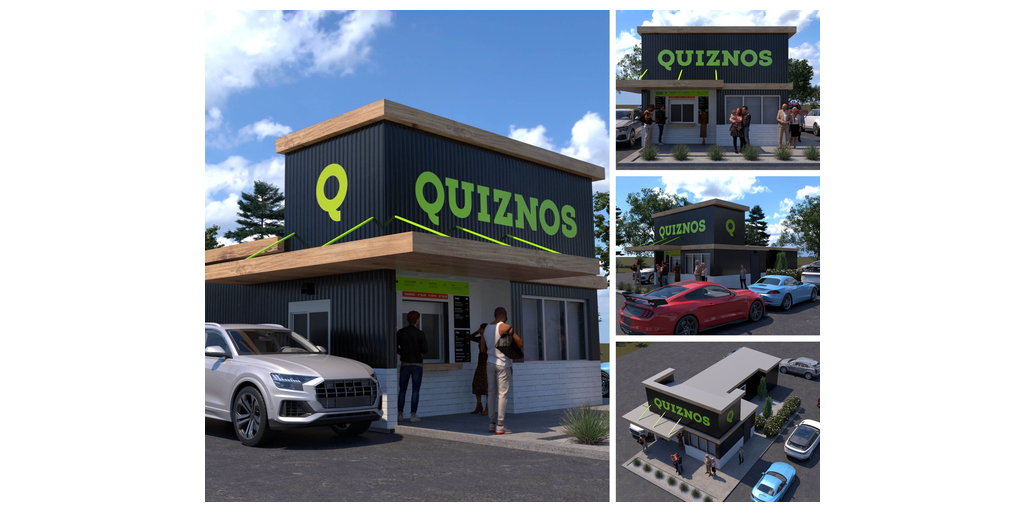
In 2018, Quiznos was acquired by High Bluff Capital Partners, and efforts were made to revitalize the brand.
The company introduced a new store format called the “Qube” to reduce costs and increase efficiency.
However, the days of Quiznos being a dominant player in the sandwich market are long gone.
By 2023, the number of Quiznos locations in the U.S. had dwindled to fewer than 150, a stark contrast to the thousands of locations it once boasted.
Conclusion
Quiznos’ downfall is a cautionary tale of corporate mismanagement, poor franchise relations, and an inability to adapt to changing market conditions.
From its innovative beginnings as a purveyor of toasted subs, the company became mired in lawsuits, financial troubles, and a damaged reputation.
While the brand still exists, its glory days as a fast-food empire are a distant memory.
The rise and fall of Quiznos highlight the importance of supporting franchisees, maintaining reasonable growth, and adapting to consumer demands—lessons that future franchises would do well to remember.

